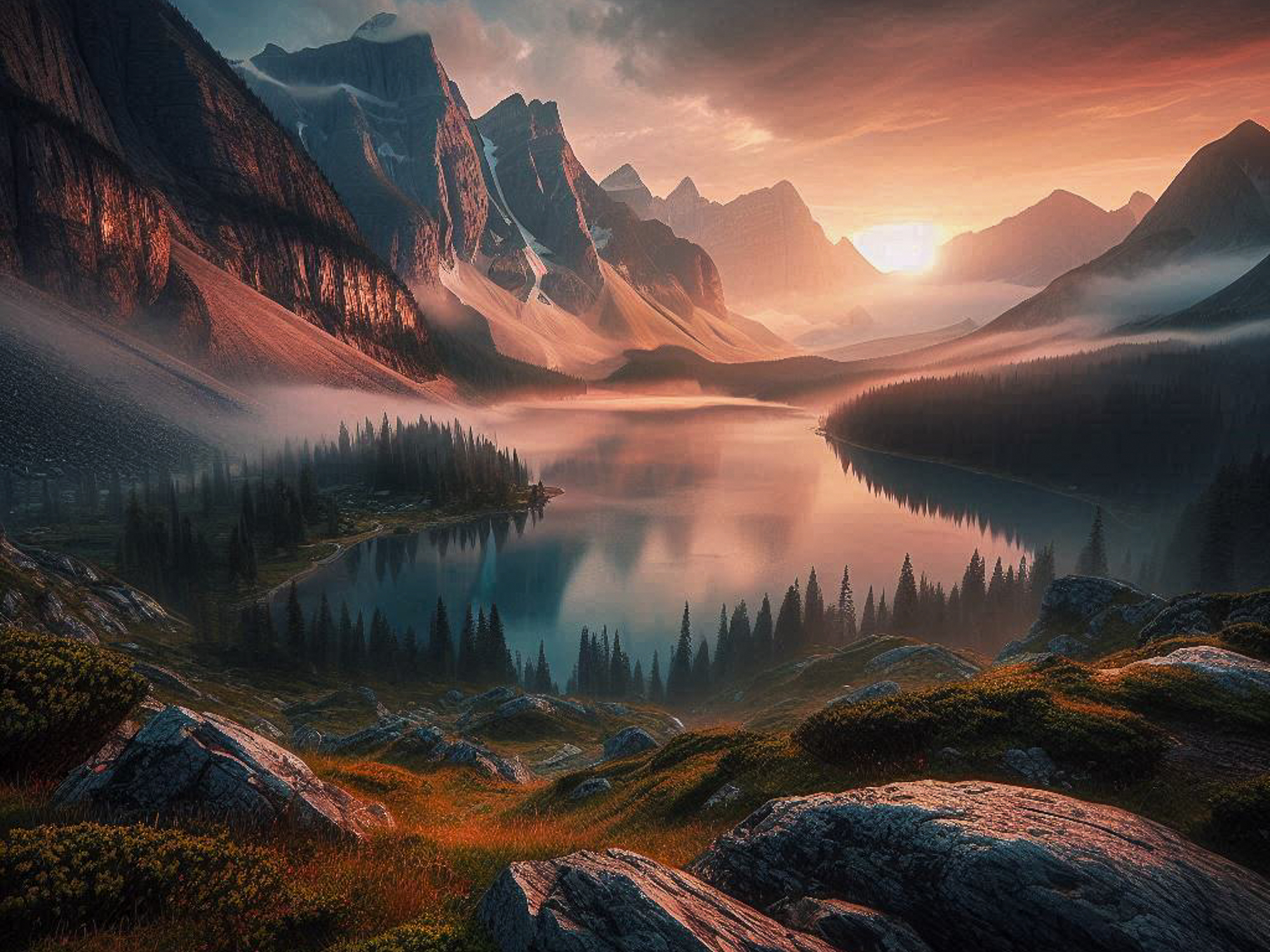Remember when editing photos meant tweaking contrast and exposure sliders for hours? Or when capturing the perfect moment meant waiting for golden hour and hoping your subject stayed still? In 2025, photography is still about capturing moments — but now, AI is right there beside you, changing how you shoot, edit, and
even imagine your images.
Let’s dive into how AI is transforming photography this year.
Shoot Less, Create More
In the past, you needed a camera to make a photo. Now? A keyboard will do.
With tools like Midjourney, Adobe Firefly, and DALL·E, you can type a simple prompt like “a mountain lake at sunrise with fog rolling in” — and in seconds, AI generates a stunning, photorealistic image. These aren’t just filters or effects — they’re full-fledged compositions built from scratch, powered by massive image training data.
This doesn’t mean traditional photography is dying. It just means you have new ways to visualize what’s in your head — even before you pick up the camera.
Smarter Cameras, Better Shots
Cameras today are basically tiny computers with artistic instincts. Whether you’re using a pro DSLR or the latest smartphone, AI is running behind the scenes: identifying subjects, predicting motion, and adjusting settings in real-time.
This is especially game-changing in fast-moving situations like sports, wildlife, or candid portraits. Your gear knows where the action is going before you press the shutter. Missed shots are becoming a thing of the past.
Editing Has Evolved
If you’ve ever spent hours masking, cloning, or retouching, welcome to a new world. In 2025, editing tools like Photoshop and Luminar Neo offer AI-powered features that feel like magic. You can:
- Instantly swap skies or backgrounds
- Remove unwanted objects with a click
- Relight entire scenes
- Change facial expressions
- Extend image borders seamlessly
Generative Fill and AI masking mean the barrier between imagination and output has never been lower. It’s not about shortcuts — it’s about speed, experimentation, and focus on the creative part of the process.
Reality Check: What’s Real Anymore?
With AI-generated images now nearly indistinguishable from real photos, a new conversation has emerged: where’s the line between photography and digital art?
This matters a lot in journalism, documentary, and legal contexts — where authenticity isn’t optional. That’s why content verification tools and digital watermarks are becoming more common, helping creators and platforms track what’s real and what’s not.
But in art, advertising, and storytelling? The boundaries are more flexible — and creativity is king.
AI Isn’t Replacing You — It’s Working With You
Despite all the hype, AI isn’t here to take over photography. It’s here to give you superpowers.
You still need vision, taste, and storytelling instincts. AI just helps you get from idea to image faster — and with fewer technical headaches in between. It opens doors for experimentation, helps you create things you never thought possible, and removes some of the most frustrating bottlenecks in your creative process.
The Bottom Line
Photography in 2025 isn’t about choosing between “real” and “AI.” It’s about combining both — the human eye and machine intelligence — to make something better.
Whether you’re a pro shooter, a hobbyist, or just someone who loves playing with images on your phone, AI is putting more creative control in your hands.
So go ahead — imagine big. The tools to bring it to life are finally here.
Niels Menko is a portrait and event photographer and teacher with Swiss Photo Club based in the Zurich region of Switzerland.
By the way, if you’re interested in the tools Niels mentioned, you can use the code spcluminar to save 10% off Luminar Neo , or go with the classic Adobe Photographers bundle to get Photoshop, Lightroom, and more powerful programs together.
For other deals and our list of essentials, check out our photography software recommendations.


